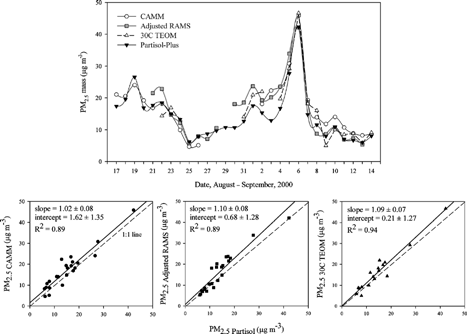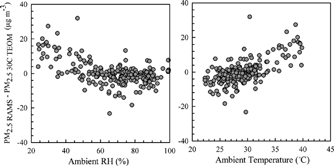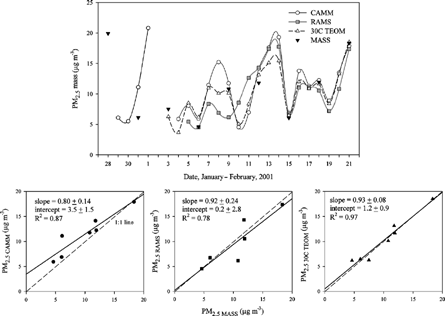Figures & data
Table 1 Sampler configuration of continuous and integrated samplers used for PM2.5 mass measurements in Houston and Seattle
Table 2 Sampler characteristics and sampling information for PM2.5 speciation instruments used in the study
Figure 1 Variation of hourly PM2.5 mass collected using continuous instruments and scattering coefficients measured in Houston, TX. The RAMS values plotted were adjusted by a factor of 1.52.

Table 3 Mean concentration (μg m−3) of valid hourly PM2.5 mass during the measurement period
Figure 2 Variation of hourly PM2.5 mass collected using continuous instruments and scattering coefficients measured in Seattle, WA.
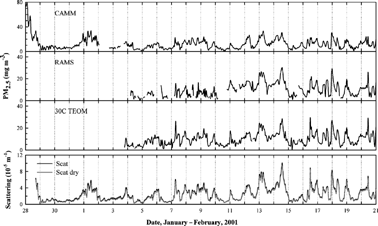
Figure 3 Intercomparison of 1 h average continuous PM2.5 mass measurements in Houston. The solid lines are the Deming linear regression fits in .

Table 4 Deming slopes and intercepts for PM2.5 mass between pairs of the continuous mass samplersFootnote a
Figure 4 Intercomparison of 1 h average continuous PM2.5 mass measurements in Seattle. The solid lines are the Deming regression fits in .
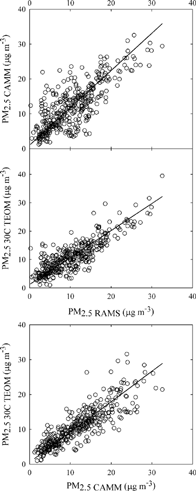
Figure 6 Comparison of 24 h average continuous PM2.5 mass and integrated PM2.5 mass concentrations in Houston: Daily variation of PM2.5 mass (top) and standard linear regressions (bottom). The solid lines are the standard regression fits.
